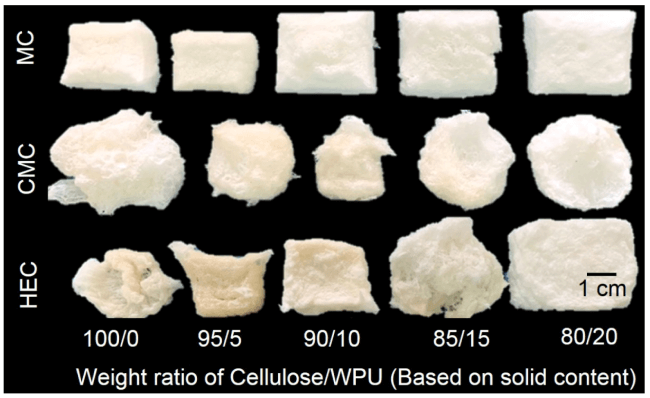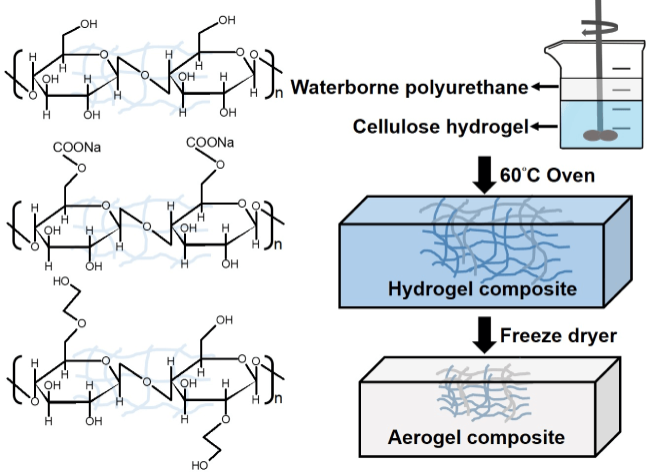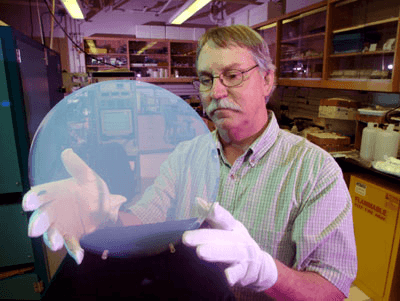Graphene Aerogels: Unlocking Potential in Energy Storage & Environmental Cleanup
Technical Analysis | 26-04-2023 | By Liam Critchley
Aerogels are a class of porous materials that originated from the development of hydrogel materials and have since gathered a lot of interest in a range of application fields due to their ultra-light nature. Graphene aerogels, a specific type of aerogel composed of graphene materials, have attracted particular attention due to their unique combination of properties. These properties have made graphene aerogels highly promising in various fields, including energy storage devices and environmental protection applications. In this article, we will explore the nature of graphene aerogels, their unique properties, and the potential applications where they are garnering interest.
By consolidating the information about the properties of graphene aerogels in the introduction and avoiding repetition, the revised introduction provides a concise overview of the article's content without going into too much detail. The article will then discuss these properties in more depth in the "Unique Properties of Graphene Aerogels" section, preventing redundancy and improving the overall flow of information.
What are Graphene Aerogels?
Graphene aerogels are a special class of aerogel materials where the solid framework is composed of graphene materials—be it pure non-functionalised graphene, graphene oxide (GO) or reduced graphene oxide (rGO), or doped graphene sheets. Before we move onto graphene aerogels specifically, let’s look at what aerogels are as a general class of materials.

How cellulose/WPU composite aerogels look.
Before we delve deeper into graphene aerogels, it's essential to understand the differences between graphene, graphene oxide (GO), and reduced graphene oxide (rGO). Graphene is a single layer of carbon atoms arranged in a two-dimensional honeycomb lattice, known for its exceptional mechanical, thermal, and electrical properties. Graphene oxide, on the other hand, is a derivative of graphene that contains oxygen-containing functional groups on its surface.
This gives graphene oxide unique properties, such as improved dispersibility in water, which makes it suitable for certain applications and synthesis methods. Reduced graphene oxide is a material derived from graphene oxide by removing some of the oxygen-containing groups. This process restores some of the graphene's properties, such as electrical conductivity, while maintaining some of the beneficial properties of graphene oxide, like dispersibility.
Understanding Aerogels: From Hydrogels to Aerogels
To define an aerogel, it’s easier to look at them from the class of materials that they were borne out of, and those are hydrogels. Hydrogels are porous polymeric gel networks that have a low level of crosslinking, enabling them to swell and retain water within their porous framework. Now, aerogels can be thought of as like a hydrogel, but instead of the porous network retaining liquids, the pores instead contain gas, leaving a solid gas-filled framework that makes them ultra-light. Aerogels start out as a gel, but the removal of any liquid inside the structure is what transforms them into an aerogel, where most of their composition (by %) is air/gas.

A lot of different materials can now be used to make aerogels, and for polymer-based aerogels, it’s simply a case of dehydrating a polymer hydrogel to form a polymer aerogel. The methods to obtain aerogels vary by method but usually involve a way of removing the liquid from a solid network—such as supercritical drying and freeze-drying methods.
Unlike hydrogels and traditional gels, aerogels are a dry solid. The pores are open in aerogels, so the gas is not trapped inside of the pores meaning that air and any gases can move in and out of the pores. In terms of porosity, aerogels need to have a porosity of at least 50%, but many aerogels made today have porosities that are above 90%—and the more pores in the structure, the more lightweight it is. Many of the pores are also only a few nanometres in diameter as well.
The Diversity of Aerogel Materials
In terms of the scope of the materials that aerogels can be made of, they range from synthetic polymers to biological polymers, silica, transition metal oxides, main group metal oxides, lanthanide and actinide metal oxides, nanoscale semiconductor materials, carbon, carbon nanotubes, metals, composite materials, and of course graphene.
Each type of aerogel comes with its own set of distinct properties based on the material being used (e.g., conductive vs insulating), but some properties are true to all hydrogels, such as an ultra-low density and an ultra-high surface area (the specific values still vary from aerogel to aerogel, but they all boast these properties).
"Researchers have successfully prepared cellulose/WPU composite hydrogel and aerogel by introducing waterborne polyurethane (WPU) resin into cellulose hydrogel, resulting in good toughness, elastic recovery ability, and improved heat resistance in some cases (Huang et al., 2022)."
While there are many types of aerogels, graphene aerogels stand out due to their unique combination of properties. In this section, we will explore the distinctive characteristics of graphene aerogels and how they contribute to their potential applications.
Unique Properties of Graphene Aerogels
Moving on to graphene aerogels. As mentioned, graphene aerogels are simply a specific type of aerogel where the solid framework is made up of graphene materials and the internal pores of the framework are made up of air/gas like any other aerogel. The use of graphene as the solid scaffold in aerogel brings a lot of benefits, including high mechanical strength, electrical conductivity, thermal resistance, cycling stability, specific capacitance, and absorption capacity.
There are currently a number of methods used for creating graphene aerogels, including hydrothermal reduction/self-assembly, chemical reduction, template-directed reduction, crosslinking and sol-gel processes. Because of the methods used to create graphene aerogels, graphene oxide materials are the most widely used for aerogels because they disperse in aqueous media easily, making the above processes easier.
"According to a review by Gorgolis and Galiotis, graphene aerogels, due to their high surface area, high porosity, high electrical conductivity, high mechanical strength, thermal stability, high specific capacitance, and high cyclic stability, are anticipated to be used as electrodes for electrochemical power sources, lithium-ion batteries, and supercapacitors. They can also be used in waste removal, as they exhibit high adsorption capacity and photocatalytic ability for dyes, oils, organic solvents, and inorganic ions."

Dr. Joe H. Satcher, Jr. from Lawrence Livermore is managing a silica aerogel sphere of significant size. (Source)
The many properties of graphene aerogels make them a material of interest in a number of application areas, which we look at in more detail below.
The Uses of Graphene Aerogels
There are two key application areas where graphene aerogels are gathering a lot of interest. The first area is in energy storage devices where the high specific capacitance, cyclic stability and electrical conductivity place a big part. The porous network of graphene aerogels also offers a stable framework for the absorption and desorption of ions during the charging/discharging cycles. The second area is in environmental protection from contaminants, and in these applications, it is the high surface area and absorption characteristics of graphene aerogels that are key.
Energy Storage Applications
In energy storage, graphene aerogels have found a lot of use in different electrodes, often as part of a hybrid electrode where the graphene aerogel is used to improve the existing properties of the electrochemical cell or to overcome some electrochemical challenges and stability issues in less commercialised batteries—such as sodium-ion batteries.
A lot of the developments in hybrid graphene aerogel anodes have come in trying to improve the properties of Li-ion batteries because while they are the go-to technology, there are still improvements that could be made in terms of performance as many other batteries have higher theoretical energy densities (but are not as stable or as commercially feasible, yet). So, the integration of graphene aerogels and utilising graphene’s properties is seen as a potential route in the future for efficient Li-ion batteries.
Li-ion batteries are not the only area of energy storage that are of interest. There’s also interest in developing graphene aerogel-based electrodes for supercapacitors and fuel cells. Aside from large energy storage devices, there’s also the potential to use these aerogels within a number of other devices, including solar photocatalytic devices, air purification devices, sound systems and electrochemical sensors.
Environmental Protection Applications
There are also a number of applications on the environmental protection front that are of interest. The absorption characteristics of graphene aerogels mean that they are suitable for absorbing several different oils and organic pollutants, making them an ideal material for cleaning up oil spills and hazardous waste—and graphene has also been used in other forms commercially as an absorbent material for cleaning up oil spills, so it’s an area where there’s potential. Aside from cleaning up different kinds of oil spills, graphene aerogels have also been created for wastewater management applications to catalytically remove organic dyes, pollutants, and oils from natural water sources.
Commercial Applications
Researchers from Graphene Flagship partners, the Italian Institute of Technology and the Sapienza University of Rome, have used ultra-broadband graphene aerogels to fabricate thermoacoustic speakers. This method leverages the excellent conductivity of graphene, enabling the conversion of audio messages into light pulses, which are then transformed into sound and recorded by a microphone that sends signals to an external amplifier. To see this process in action, watch the following video.
Conclusion: The Potential of Graphene Aerogels
In conclusion, graphene aerogels possess remarkable properties such as high mechanical strength, electrical conductivity, thermal resistance, cycling stability, specific capacitance, and absorption capacity, making them a highly promising material in various fields. Their potential applications span across energy storage devices, such as Li-ion batteries, supercapacitors, and fuel cells, as well as environmental protection through waste absorption and water purification.
Despite the significant advancements in graphene aerogel research, the journey from the laboratory to the commercial market remains filled with challenges. Efforts to refine synthesis methods, reduce production costs, and address environmental concerns related to the production process are crucial in unlocking the full potential of graphene aerogels in real-world applications.
As these obstacles are overcome, graphene aerogels stand poised to revolutionise industries such as energy storage and environmental protection, paving the way for a more sustainable and efficient future. The versatility of graphene aerogels, coupled with ongoing research and development, holds immense promise for harnessing their unique properties to address pressing global challenges and transform the way we harness and preserve energy and resources.
References:
Websites: http://www.aerogel.org/
Gorgolis G. and Galiotis C., Graphene aerogels: a review, 2D Materials, 4 (2017), 032001

